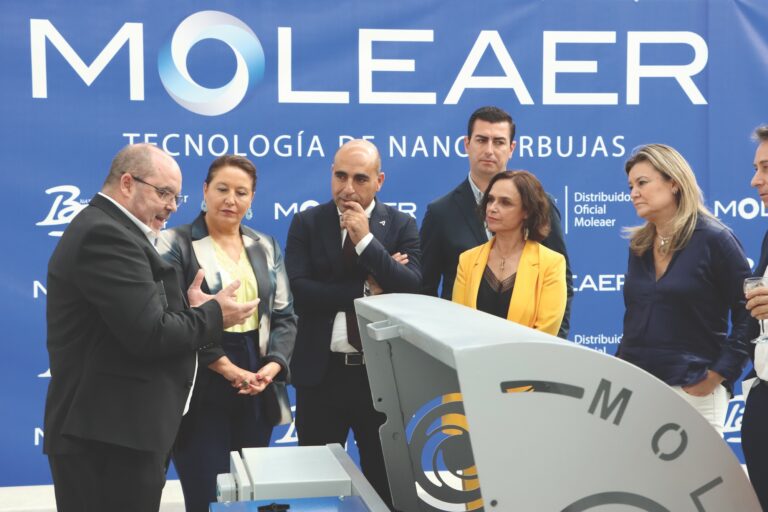
Hawthorne-based water oxygenation company Moleaer Inc. has sold a pair of its nanobubble generation machines to the Inland Empire city of Lake Elsinore to deal with a chronic algal bloom problem in the namesake lake.
Moleaer announced the $1.9 million deal at a lakeside press conference with city officials last month.
Moleaer (pronounced like the name of French playwright Molière) uses microscopic gas bubbles, called nanobubbles, to boost levels of oxygen or other gases in water and other liquids. The nanobubbles, which are less than 0.04% the size of a grain of salt, stay in the liquid much longer than larger bubbles from traditional aeration devices. That allows more time for oxygen in the nanobubbles to disperse into the surrounding body of water or other liquid.
With higher oxygen levels, conditions in the water are less favorable to the creation of algae and other harmful compounds. And in situations where water is used to irrigate crops, nanobubbles allow more oxygen to penetrate into the crop roots, significantly boosting productivity.
The nanobubble technology was developed by two wastewater treatment industry veterans, Warren Russell and Bruce Scholten, who discovered a way to shear off bubbles early in their formation process to prevent them from becoming larger. In early 2017 the pair decided to form a company to commercialize the process. They were soon joined by early investor Nick Dyner, who became Moleaer’s chief executive.
Moleaer sought to apply its technology to wastewater treatment and farm irrigation opportunities throughout the United States and across the globe. Currently, Moleaer has deployed more than 2,500 nanobubble generator installations in more than 55 countries.
Lake Elsinore cleanup
Lake Elsinore, with 3,300 acres of surface water and a maximum depth of 40 feet, is Southern California’s largest freshwater lake. But it is a terminal lake, meaning there is no outflow for the nutrient-rich water. That has allowed for frequent algal blooms that have emitted high level of toxins, making it unsafe for people and pets to go into the water. This has resulted in frequent lake closures and caution advisories.
The city of Lake Elsinore has undertaken a $2 million-plus, three-pronged plan to curtail the algal blooms and restore the lake’s ecological balance: a peroxide-based solution to kill the algae, a water-treatment chemical and Moleaer’s nanobubble technology. According to the company, the nanobubbles in this instance will help break down organic contaminants and disturb compacted sediment layers.
Moleaer will install two custom-built nanobubble generators on a floating barge in the lake, which will eliminate the need for a complex piping system. The twin generators are expected to treat 2,400 gallons of water per minute. The sale and installation price is about $1.7 million. The city is also paying the company approximately $230,000 for additional related services, including equipment service and water testing.
